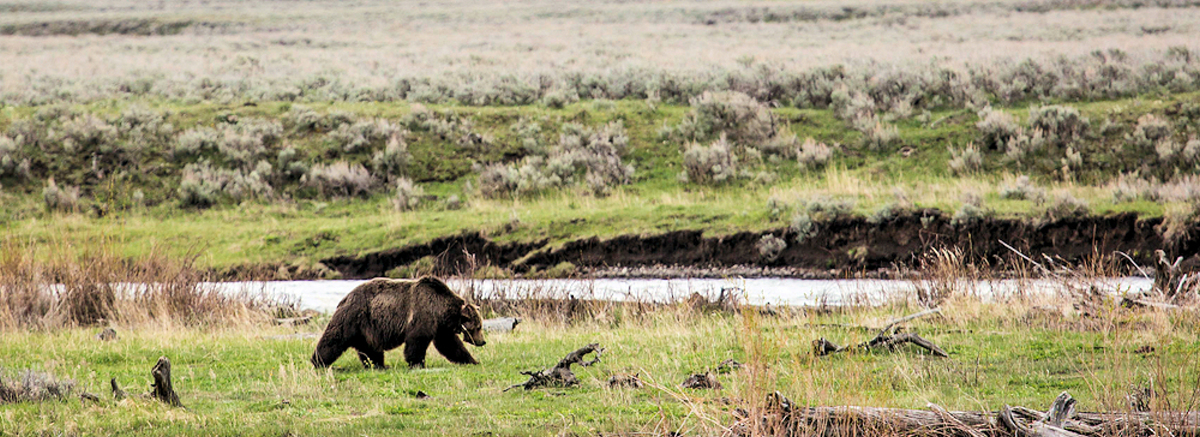Yellowstone is home to both grizzly and black bears. Although the risk of an encounter with a bear is low, there are no guarantees of your safety. Minimize your risks by following the guidelines below:
Make bears aware of your presence on trails by making loud noises such as shouting or singing. This lessens the chance of sudden encounters, which are the cause of most bear-caused human injuries in the park. Hike in groups and use caution where vision is obstructed.
Do not hike after dark.
Avoid carcasses; bears often defend this source of food.
If you encounter a bear, do not run. Bears can run over 30 miles per hour, or 44 feet per second, faster than Olympic sprinters. Running may elicit an attack from otherwise non-aggressive bears. If the bear is unaware of you, detour away from the bear. If the bear is aware of you and nearby, but has not acted aggressively, slowly back away.
Tree climbing to avoid bears is popular advice but not very practical in many circumstances. All black bears, all grizzly cubs, and some adult grizzlies can climb trees. Running to a tree may provoke an otherwise uncertain bear to chase you.
Some bears will bluff their way out of a threatening situation by charging, then veering off or stopping abruptly at the last second. Bear experts generally recommend standing still until the bear stops and then slowly backing away. If a bear makes physical contact, drop to the ground, lie face down, and clasp your hands behind your neck. It may take all the courage you have, but lie still and remain silent. Resistance will only provoke the bear. Before moving, listen and look around carefully to make sure the bear is no longer nearby.
